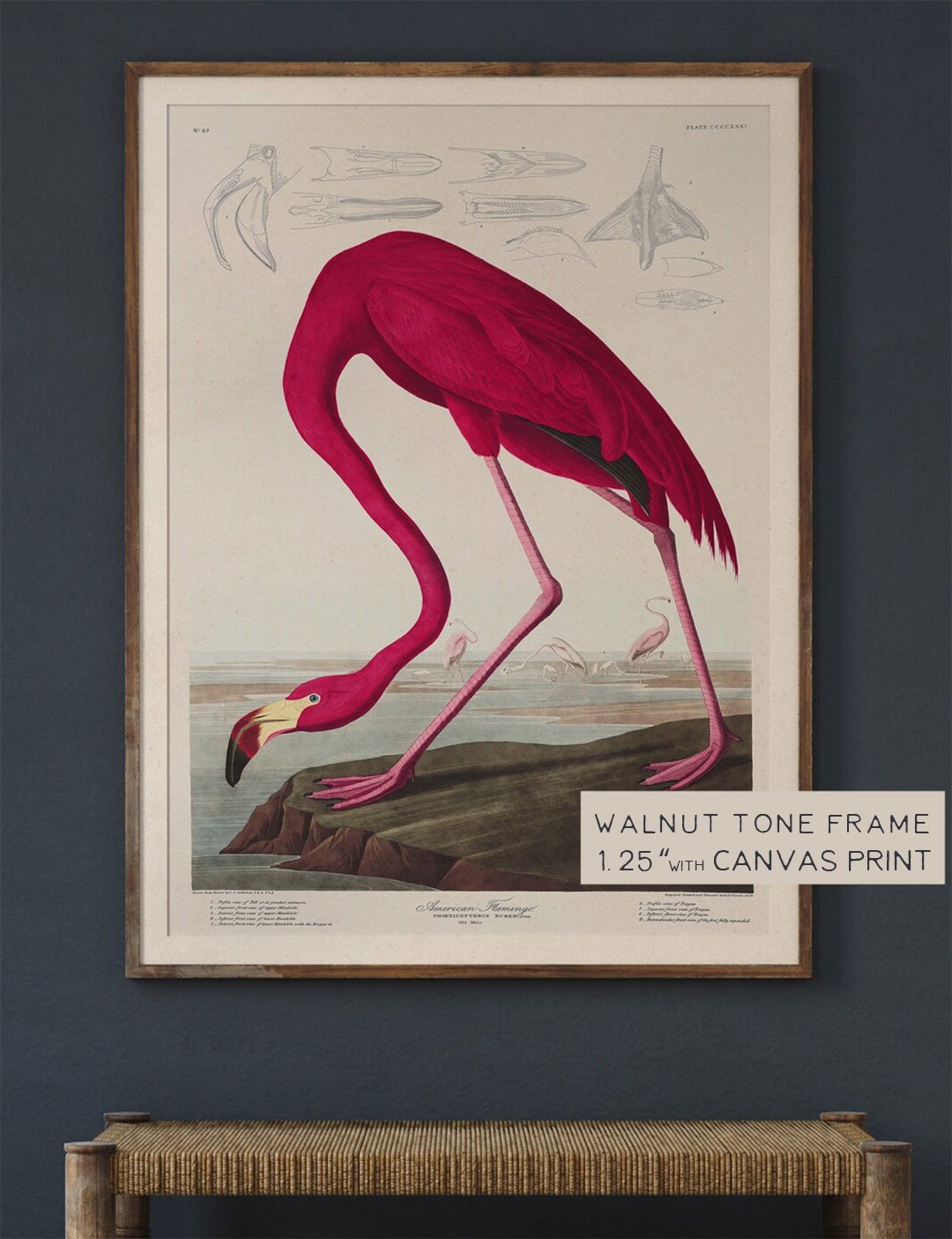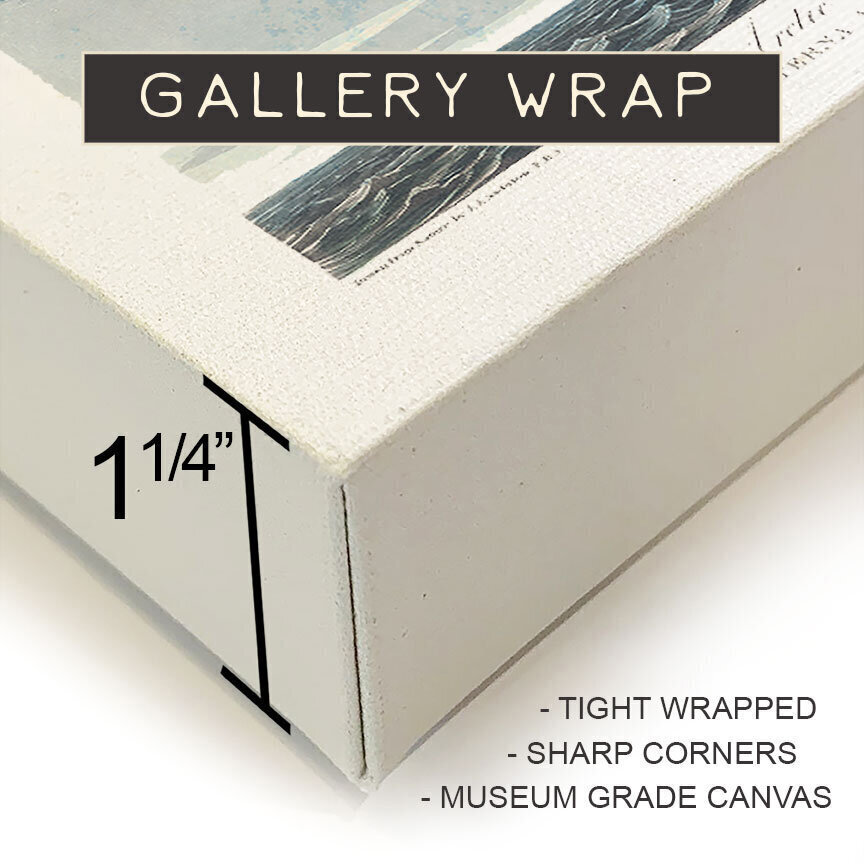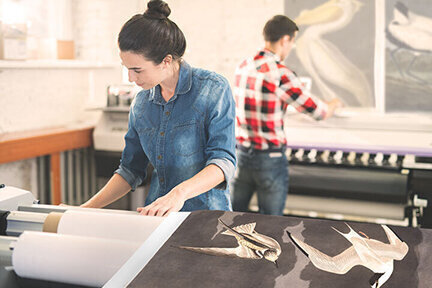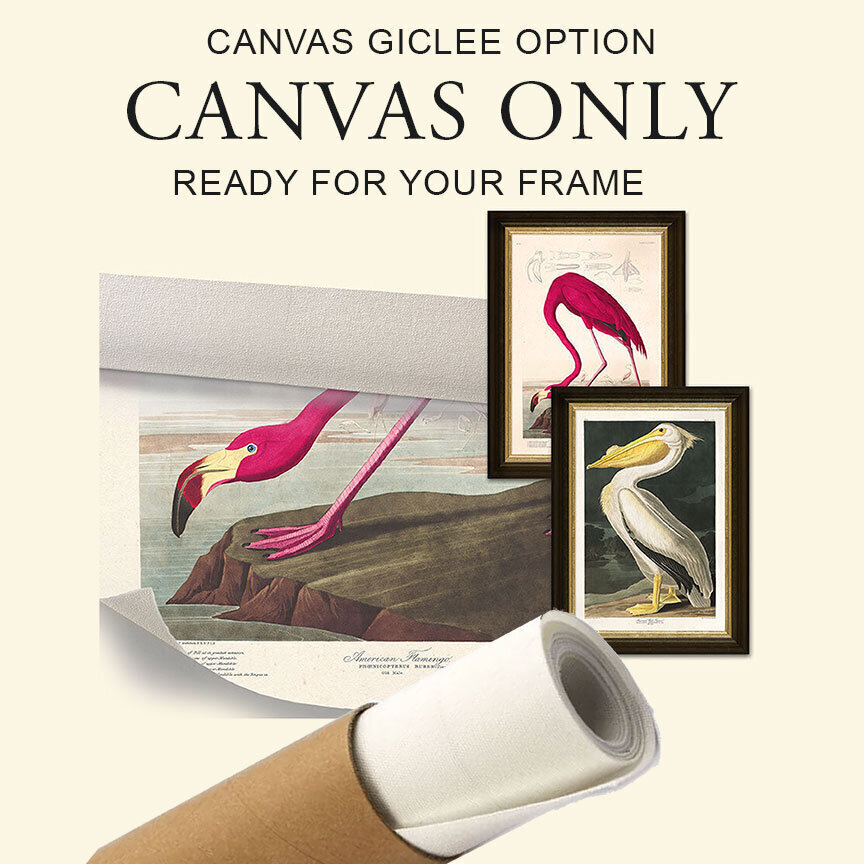Each Audubon art print is hand created to deliver a beautiful work of art to your home. You will love the quality of each print. See some examples of how people use their Audubon art prints, posters, wall art and wall decor by clicking the “DECOR IDEAS” link at the bottom of the page.
John James Audubon’s Journal Entry Regarding the American Flamingo:
On the 7th of May, 1832, while sailing from Indian Key, one of the numerous islets that skirt the south-eastern coast of the Peninsula of Florida, I for the first time saw a flock of Flamingoes. It was on the afternoon of one of those sultry days which, in that portion of the country, exhibit towards evening the most glorious effulgence that can be conceived. The sun, now far advanced toward the horizon, still shone with full splendour, the ocean around glittered in its quiet beauty, and the light fleecy clouds that here and there spotted the heavens, seemed flakes of snow margined with gold. Our bark was propelled almost as if by magic, for scarcely was a ripple raised by her bows as we moved in silence. Far away to seaward we spied a flock of Flamingoes advancing in "Indian line," with well-spread wings, outstretched necks, and long legs directed backwards. Ah! reader, could you but know the emotions that then agitated my breast! I thought I had now reached the height of all my expectations, for my voyage to the Floridas was undertaken in a great measure for the purpose of studying these lovely birds in their own beautiful islands. I followed them with my eyes, watching as it were every beat of their wings; and as they were rapidly advancing towards us, Captain DAY, who was aware of my anxiety to procure some, had every man stowed away out of sight and our gunners in readiness. The pilot, Mr. EGAN, proposed to offer the first taste of his "groceries" to the leader of the band. He was a first-rate shot, and had already killed many Flamingoes. The birds were now, as I thought, within a hundred and fifty yards; when suddenly, to our extreme disappointment, their chief veered away, and was of course followed by the rest. Mr. EGAN, however, assured us that they would fly round the Key, and alight not far from us, in less than ten minutes, which in fact they did, although to me these minutes seemed almost hours. "Now they come," said the pilot, "keep low." This we did; but, alas! the Flamingoes were all, as I suppose, very old and experienced birds, with the exception of one, for on turning round the lower end of the Key, they spied our boat again, sailed away without flapping their wings, and alighted about four hundred yards from us, and upwards of one hundred from the shore, on a "soap flat" of vast extent, where neither boat nor man could approach them. I however watched their motions until dusk, when we reluctantly left the spot and advanced toward Indian Key. Mr. EGAN then told me that these birds habitually returned to their feeding-grounds toward evening, that they fed during the greater part of the night, and were much more nocturnal in their habits than any of the Heron tribe.
When I reached Key West, my first inquiries, addressed to Dr. BENJAMIN STROBEL, had reference to the Flamingoes, and I felt gratified by learning that he had killed a good number of them, and that he would assist us in procuring some. As on that Key they are fond of resorting to the shallow ponds formerly kept there as reservoirs of water, for the purpose of making salt, we visited them at different times, but always without success; and, although I saw a great number of them in the course of my stay in that country, I cannot even at this moment boast of having had the satisfaction of shooting a single individual.
A very few of these birds have been known to proceed eastward of the Floridas beyond Charleston in South Carolina, and some have been procured there within eight or ten years back. None have ever been observed about the mouths of the Mississippi; and to my great surprise I did not meet with any in the course of my voyage to the Texas, where, indeed, I was assured they had never been seen, at least as far as Galveston Island. The western coast of Florida, and some portions of that of Alabama, in the neighbourhood of Pensacola, are the parts to which they mostly resort; but they are said to be there always extremely shy, and can be procured only by waylaying them in the vicinity of their feeding-grounds toward evening, when, on one occasion, Dr. STROBEL shot several in the course of a few hours. Dr. LEITNER also procured some in the course of his botanical excursions along the western coast of the Floridas, where he was at last murdered by some party of Seminole Indians, at the time of our last disastrous war with those children of the desert.
Flamingoes, as I am informed, are abundant on the Island of Cuba, more especially on the southern side of some of its shores, and where many islets at some distance from the mainland afford them ample protection. In their flight they resemble Ibises, and they usually move in lines, with the neck and legs fully extended, alternately flapping their wings for twenty or thirty yards and sailing over a like space. Before alighting they generally sail round the place for several minutes, when their glowing tints become most conspicuous. They very rarely alight on the shore itself, unless, as I am told, during the breeding season, but usually in the water, and on shallow banks, whether of mud or of sand, from which, however, they often wade to the shores. Their walk is stately and slow, and their cautiousness extreme, so that it is very difficult to approach them, as their great height enables them to see and watch the movements of their various enemies at a distance. When travelling over the water, they rarely fly at a greater height than eight or ten feet; but when passing over the land, no matter how short the distance may be, they, as well as Ibises and Herons, advance at a considerable elevation. I well remember that on one occasion, when near Key West, I saw one of them flying directly towards a small hammock of mangroves, to which I was near, and towards which I made, in full expectation of having a fine shot. When the bird came within a hundred and twenty yards, it rose obliquely, and when directly over my head, was almost as far off. I fired, but with no other effect than that of altering its course, and inducing it to rise still higher. It continued to fly at this elevation until nearly half a mile off, when it sailed downwards, and resumed its wonted low flight.
















































